Prague, with its medieval cobbled bohemian streets and charming riverside views, is one of the most romantic capitals of Europe in my opinion. In this Prague travel guide, I will share all the information you need to explore this wonderful city in the most efficient way. When to go to Prague, how many days to visit the city, where to stay, how to get around, what to eat and drink, how much budget you need, where to shop and of course the must-see places of Prague… Here is the ultimate Prague travel guide…
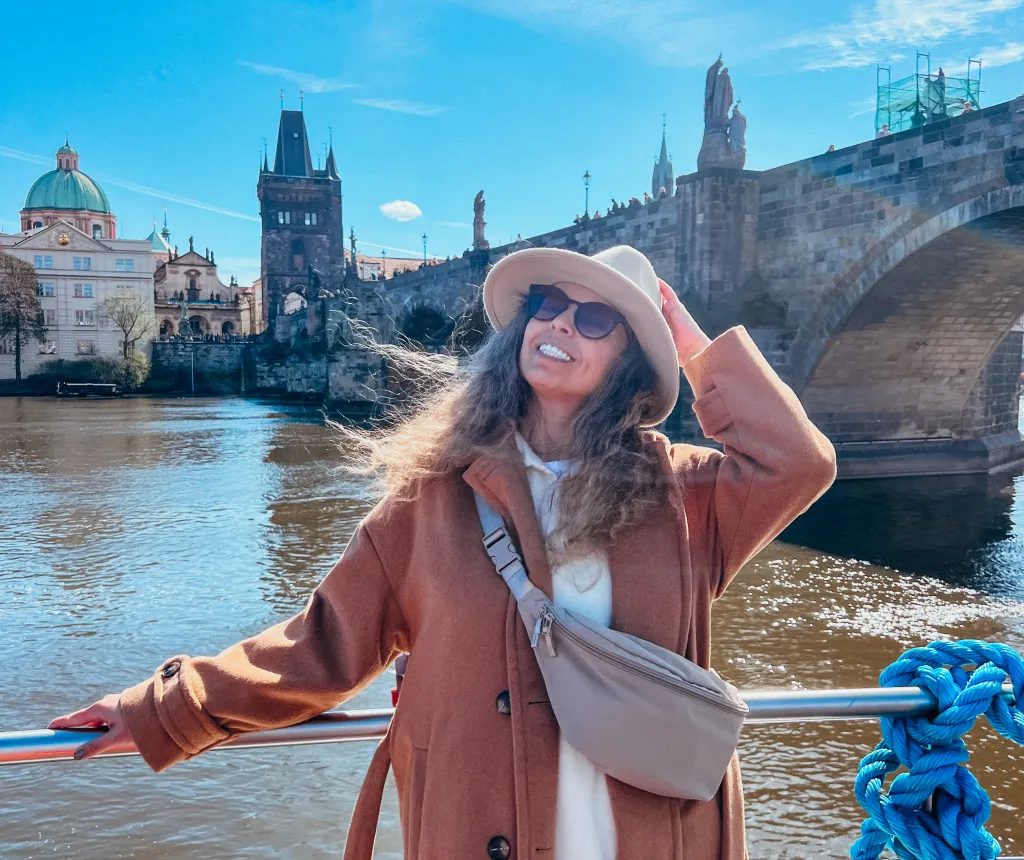
Things to Know Before Traveling to Prague
- Prague is the capital of the Czech Republic, the country’s short name is Czechia.
- You must have a Schengen visa to visit Czechia.
- Czech koruna (CZK) is used as the currency. Credit cards are accepted almost everywhere.
- The official language is Czech but you can communicate in English in touristic places and restaurants.
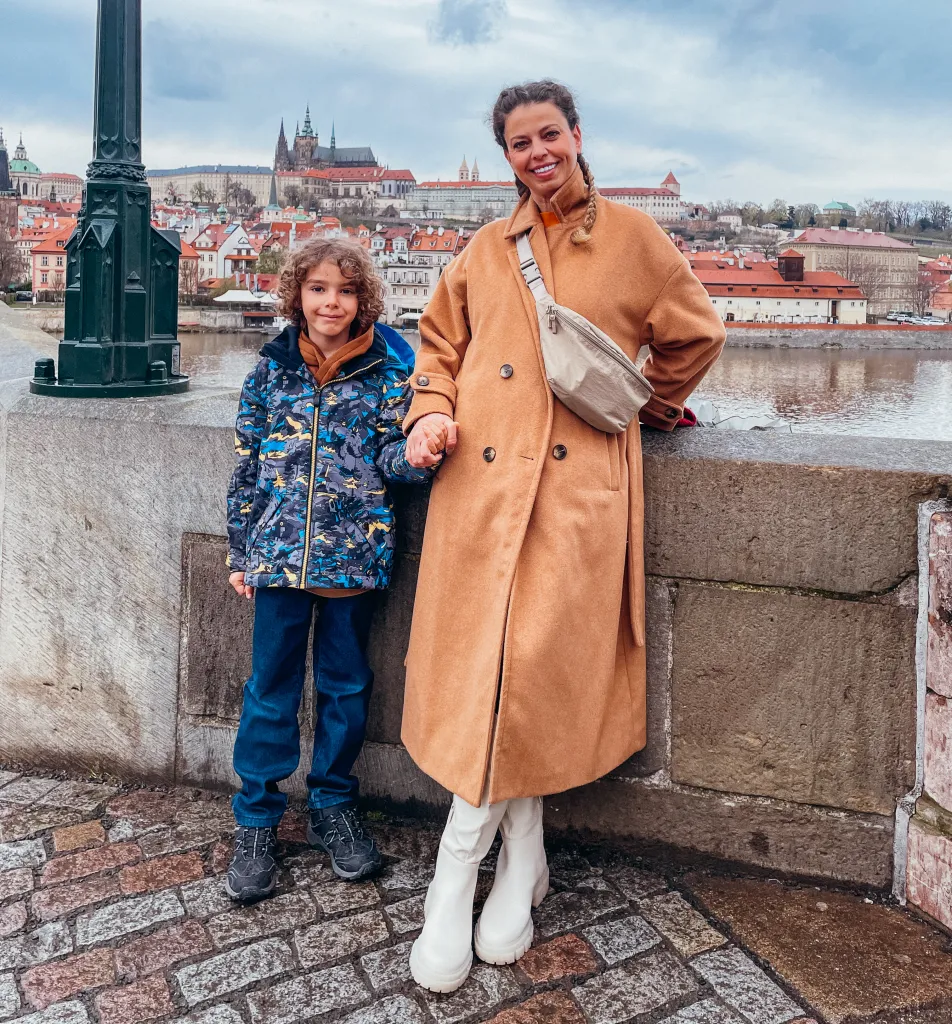
When to go to Prague?
When to go to Prague is one of the first things to answer when planning a trip to Prague. Although Prague is beautiful every time of the year, the best time to visit will depend on how you want to enjoy your trip the most.
Spring is one of the most popular times to visit Prague. This is the time when the city’s parks and gardens start to flourish again and the mild weather allows for more time outdoors. Prague is crowded with tourists all year round, but the crowds are especially high around Easter and in May when the weather warms up.
Summer is Prague’s peak tourist season. In June, July and August, with good weather, long days and outdoor activities, the city becomes more attractive for sightseeing. Naturally, there is a significant increase in both crowds and accommodation prices during this period.
Fall, especially September and October, is another excellent time to visit Prague. The weather is still mild and pleasant, and the summer crowds have diminished. The city is covered in the colors of autumn and this suits Prague’s gothic and baroque architecture very well.
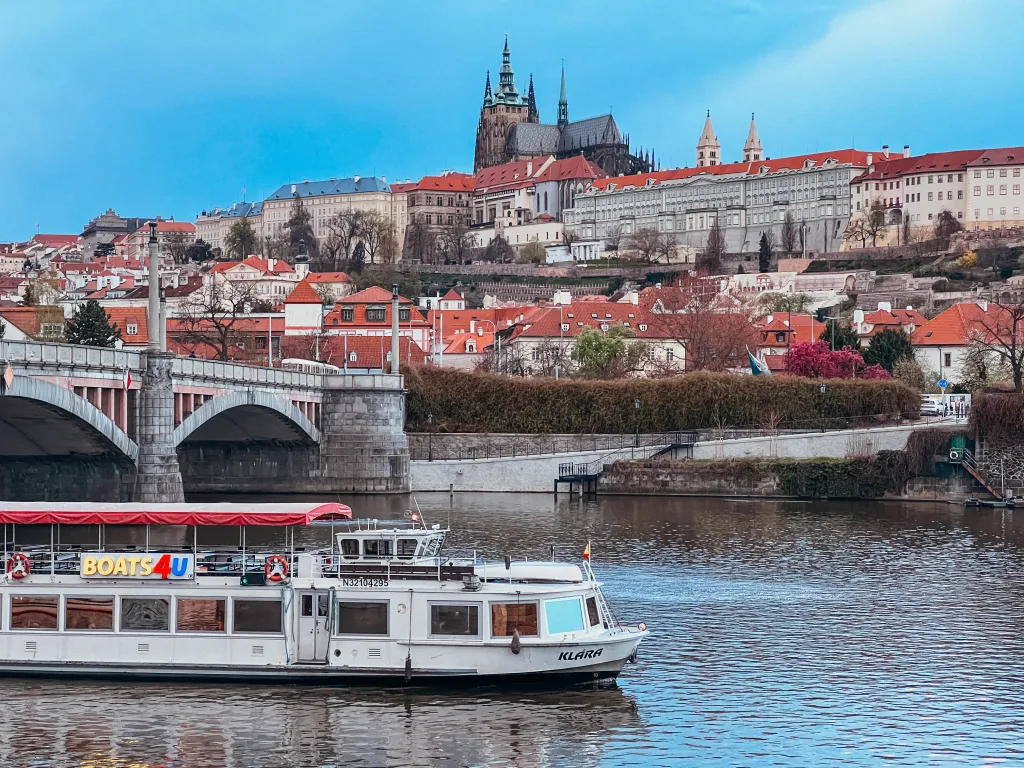
How Many Days to Visit Prague?
The time you need to spend exploring Prague will vary depending on the activities you have planned, but I’ll give you a rough idea.
Those who have a short time and are looking for a weekend getaway may consider Prague because 2 days at a fast pace may be enough to visit the most famous tourist attractions and breathe the charming air of Prague. You will also have time to taste the local delicacies.
If you want to explore the history of Prague in depth or spend some quiet time like a local, I would recommend at least 4 days. You may also want to visit some of the beautiful places around Prague. You will need extra days for that. For example, Karlovy Vary, which is 2 hours away, is a lovely place famous for its hot springs. Cesky Krumlov, also 2 hours and 45 minutes away, is a very photogenic medieval town that I recommend you to visit from Prague.
The first time I visited Prague, I stayed for 4 days and had time to visit the main sights as well as the surrounding areas. The second time I stayed for 3 days. This time I went with my child and spent some time as a native of Prague, focusing on the places that would be of interest to him.
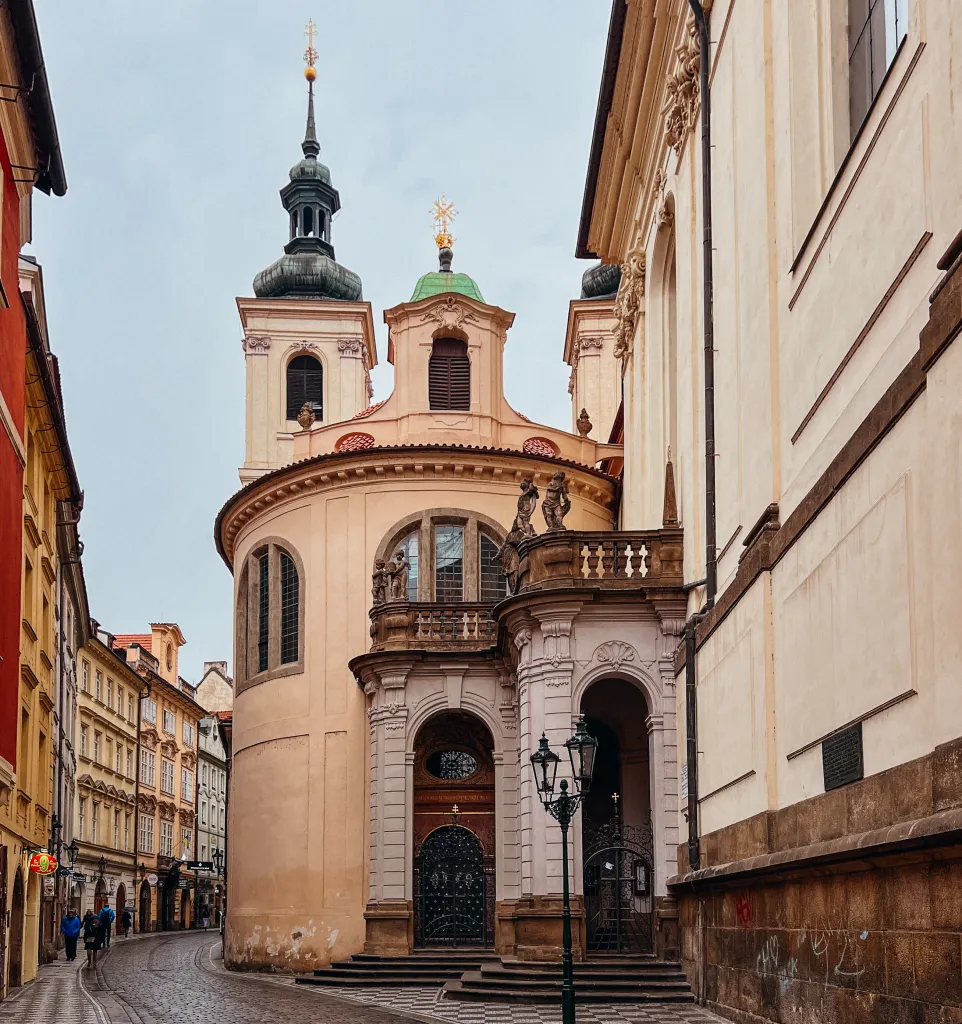
Prague Accommodation Guide
First, let me briefly explain the neighborhoods in Prague and then I will share my hotel recommendations for different budgets. I found the hotels as a result of my intensive research.
Which neighborhood to stay in Prague?
If you are going to Prague for the first time, I recommend you to stay in Stare Mesto, Old Town. The most important historical buildings are located in this area, you can reach most places on foot. Mala Strana, Lesser Town, is another area you can choose to be close to the tourist attractions. It is located across the river, just below Prague Castle. Nove Mesto, the New Town, can be a good option for families. Since it is adjacent to Old Town, it is not too far from the tourist attractions and it is quieter. There are plenty of shopping and dining options. If it’s not your first time in Prague, you might want to consider Vinohrady, a hipster neighborhood that has become increasingly popular with new places opening. Karlin and Holesovice are also hipster neighborhoods with brand new venues and events. Nightlife lovers and young people may also prefer the Zizkov area. Even if you stay far from the center, you will not have any problems if you are close to public transportation.
Prague Hotel Recommendations
I have selected hotels with good reviews, high ratings, cleanliness and good location.
Luxury Prague Hotels: Four Seasons Hotel Prague, Andaz Prague, The Grand Mark Prague, Augustine, Pytloun Boutique Hotel Prague, Almanac X Alcron Prague, Hotel KINGS COURT, The Julius Prague
Mid-range Prague Hotels: Hotel Golden Crown, Black Star Suites, Unitas Hotel, Hotel Liberty, Three Storks, MOOo Downtown, Hotel Essence, Golden Star, MOOo by the Castle, Loreta Hotel, MeetMe23, Bishop’s House, Aurea Legends, Miss Sophie’s Downtown, Nana Macs, Wenceslas Square Hotel
Cheap Hotels in Prague: The King Charles, a&o Prague Rhea, Iris Hotel Eden, Ibis Praha Old Town, Deminka Palace, EA Hotel Downtown, Prague Golden Age, Rooftop Planet Prague Hotel
On our last visit, we stayed at Residence St Havel Prague Old Town in Old Town. We stayed in a very spacious apartment with two rooms and a living room and we were very satisfied. I can recommend it with peace of mind, especially for families.
Click here to check all suitable Prague hotels.
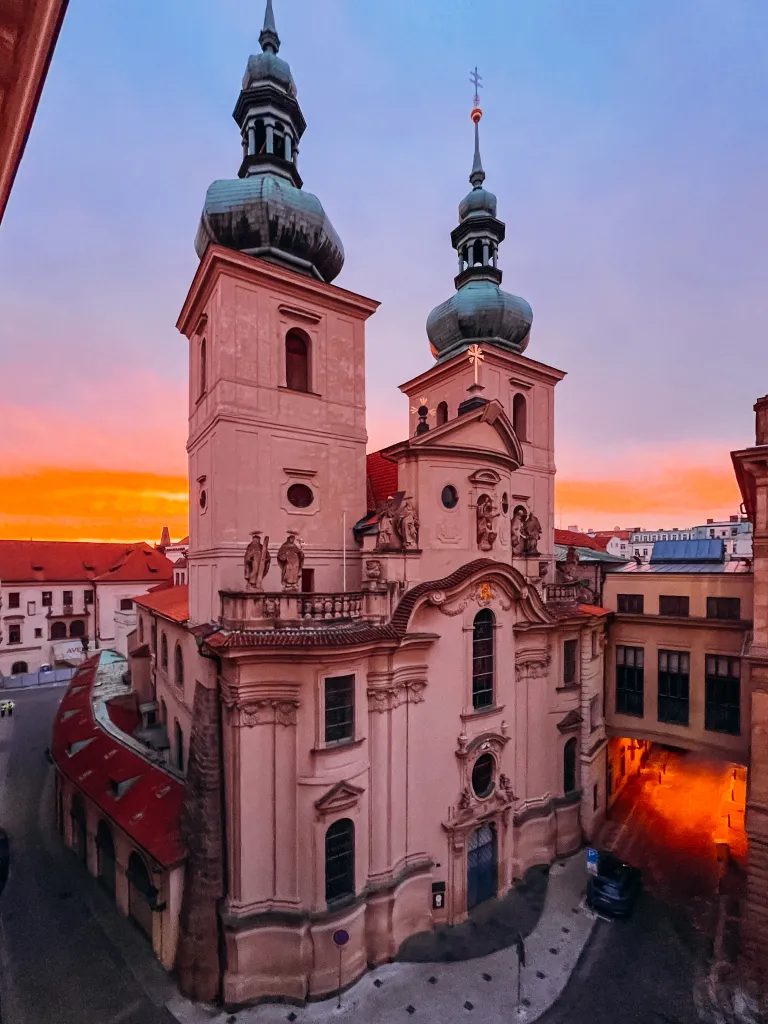
Prague Transportation Guide
First, let me tell you about transportation from the airport to the city center, then I will talk about public transportation in the city.
Getting from Prague Airport to the City Center
Prague Airport (Vaclav Havel) is located 17 km from the city center and there are three ways to get there.
Airport Express: Runs between the airport and Hlavni Nadrazi (Central Train Station), with no intermediate stops. It operates between 5:30 am and 10:00 pm. Travel time is 40 minutes and the fare is 100 CZK.
Bus & Metro: The most economical way to get from Prague Airport to the city center is by a combination of bus and metro. As of March 2024, trolleybus number 59 (formerly bus number 119) runs from the airport to Nadrazi Veleslavin metro station. From there, you can take the metro (green line) to the city center. The price for this is 40 CZK. The journey time varies depending on the stop, but it can be around 45 minutes. At night, bus number 910 runs and goes directly to the city center. This also takes around 45 minutes and costs 40 CZK.
Taxi: If you prefer to take a taxi from Prague Airport to the city center, you will pay a fix 750 CZK for a 4-seater and a fix 990 CZK for an 8-seater
Public Transportation in Prague
Prague has three main metro lines (A, B and C) and you can reach most parts of the city by metro. The tram is also very widely used. Lines 9, 17 and 22 are the main lines. There is also a nostalgic tram number 42, which you can use for sightseeing, passing through important points of the city. You can use the buses for places where the metro and tram don’t go. You can also use the funicular to go up to Petrin Hill.
For public transportation, there are also night lines that run from 0:30 to 4:30 on weekends. There are 9 tram lines numbered 91-99 and bus lines numbered 901-915.
Public transportation fares are as follows, children up to 15 years old are free. As in most European countries, you need to validate your ticket before boarding the vehicles.
- 30 minute ticket – 30 CZK
- 90-minute ticket – 40 CZK
- 24 hour ticket – 120 CZK
- 72-hour ticket – CZK 330
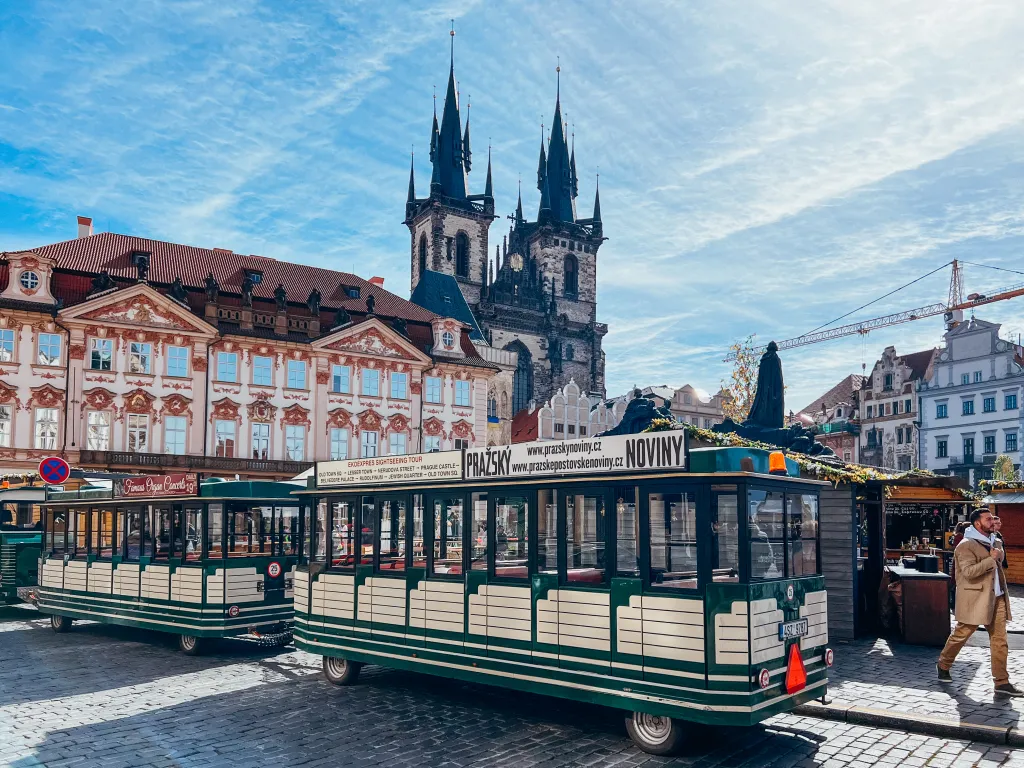
Prague Food Guide
First of all, I will introduce you to the traditional dishes you can eat in Prague, and then I will give you some recommendations for places to eat.
What to eat in Prague?
Knedliky: An indispensable part of Czech cuisine. It is a pastry made of bread or potatoes and is usually served with juicy dishes because of its ability to absorb sauces.
Goulash: A spicy meat stew influenced by Hungarian cuisine, usually served with knedliky.
Svickova: Slow-cooked beef with vegetable sauce. Usually served with knedliky.
Smazeny Syr: Breaded and fried cheese, one of Prague’s favorite street foods.
Nakladany Hermelin: A kind of appetizer where Hermelín cheese (a Czech cheese similar to Camembert) is marinated with spices such as garlic, paprika, bay leaf and pepper flakes and pickled in oil.
Chlebicek: A food that I can briefly describe as an open sandwich. Like Denmark’s famous smorrebrod, it is served with some ingredients on bread.
Trdelnik: A sweet pastry wrapped in a spiral, coated with sugar and cinnamon and fried. You will often see it on street stalls. The spool dessert from the TV series North and South.
Pivo (Beer): The Czech Republic is famous for its beers. The most popular beers are Pilsner Urquell, Staropramen and Budweiser Budvar, but there are many other good local beers.
Becherovka: A Czech liqueur flavored with herbs and spices. It is usually drunk after a meal to help digestion.
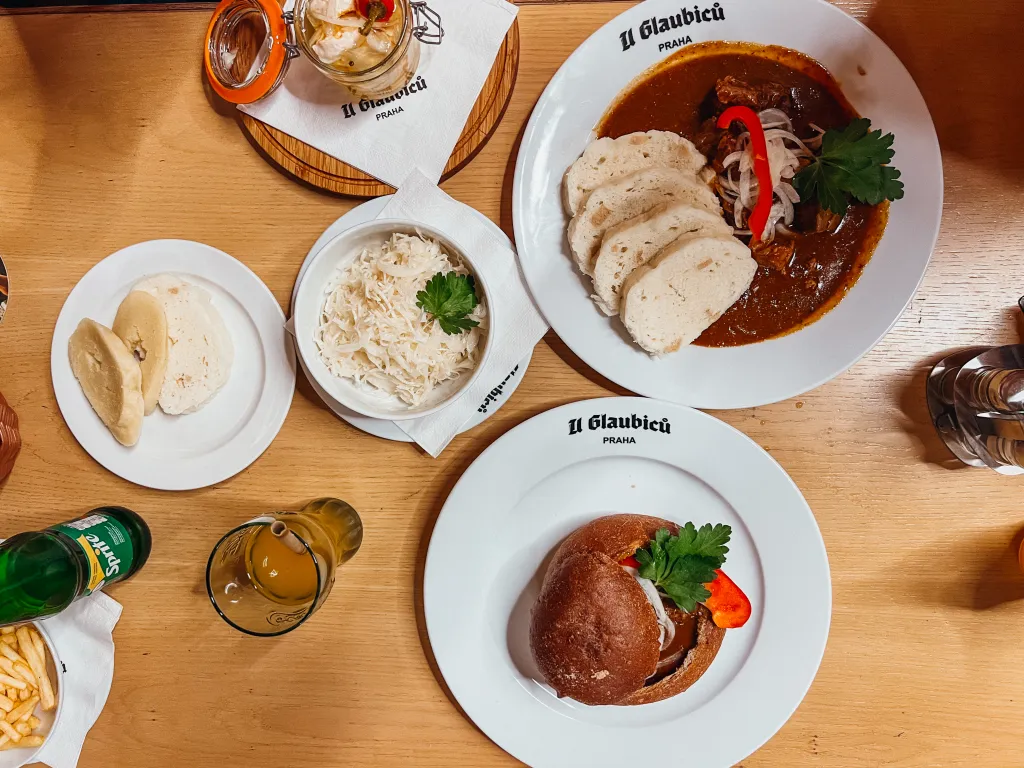
Restaurants to Visit for the Most Delicious Food in Prague
I’d like to start with Prague’s historic cafes and then I’ll move on to different cafes, places to eat traditional food and stylish places.
Cafe Louvre: A historical cafe that hosted famous names such as Albert Einstein and Franz Kafka. It has a wide menu from breakfast to dinner.
Cafe Slavia: The cafe where Nazım Hikmet and many other historical celebrities were regulars. You can have dinner accompanied by a live piano concert.
Cafe Savoy: A cafe famous for its historical atmosphere and delicious menu.
Cafe Imperial: A historic and elegant cafe decorated in Art Deco style with a flamboyant atmosphere.
Cocovanka: A cozy, cozy cafe for a drink and a break, with a very sweet interior decoration.
artic Bakehouse: A chain bakery in Prague and their products are delicious.
Antonínovo pekařství: This is another successful chain bakery in Prague.
Cafe Letka: It’s far from the historic district, but the breakfast and ambiance are very good.
Mr.HotDoG: If you want to eat something other than traditional Czech cuisine, try this place’s American-style sausages. This place is also far from the center.
Nase maso: This is a butcher shop with a few bistro tables. Those who want to try quality local meat products can put this place on their list.
Vytopna Railway Restaurant: Famous for its different concept where miniature trains bring drinks and food to your table. It’s a fun experience for both children and adults.
Lokal U Bile Kuzelky: The restaurant serves traditional Czech cuisine and is popular with locals.
U Fleku: Famous historical venue with 8 different halls serving traditional local dishes and beer.
U Parlamentu: One of the traditional restaurants with a very local atmosphere and good food.
U Glaubicu: A local traditional Czech restaurant in Lesser Town that has been serving for centuries.
U Kunstatu: A pleasant place where you can taste local beers, with a nice garden, both central and quiet. They have a special tasting menu.
Dva kohouti: A microbrewery and beer garden serving local beers. There are DJ performances in the evenings.
Eska Karlin: The open kitchen concept, menu made with sustainable ingredients, bread baked in a wooden oven and innovative dishes are among the details that make this place special. The place, which attracts attention with its industrial design, is included in the Michelin guide.
Kantyna: A must-visit steakhouse for meat lovers. They work like self-service, you can choose from cooked or uncooked meats, or you can have it cooked.
Terasa U Prince: Perhaps the restaurant with the best view in Prague. Especially when the weather is nice.
Let me recommend two cocktail bars: Alchemist Bar and Anonymous Bar
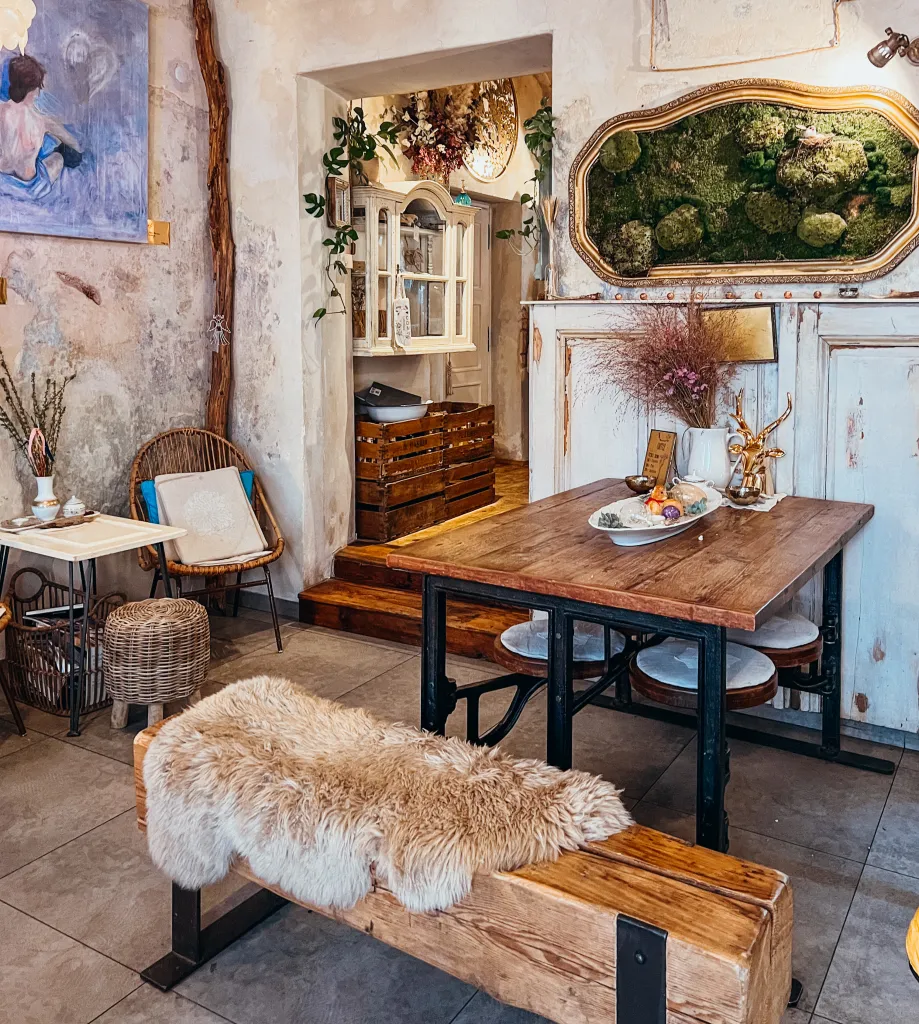
Prague Shopping Guide
First of all, let me talk a little bit about what to buy as a souvenir in Prague. Then I will share the places where you can shop.
Czech Republic’s world famous Bohemian crystal, Czech garnet, a semi-precious stone, wooden Marionette puppets for children are some of the nice souvenirs you can buy in Prague. You can also buy Becherovka liqueur or Czech beer. And for those who love care products, check out the famous Czech herbal Alpa lotions.
Parizska Street: In Prague’s most luxurious shopping street, you can find shops of world-famous brands. There are luxury brands such as Louis Vuitton, Prada and Gucci, as well as high-quality local boutiques.
Na Prikope: One of the busiest and most popular shopping streets in Prague, located between the Old Town and the New Town. It is a remarkable street with its historical and architectural beauty. We can compare it to Istiklal Street.
Havelska Trziste (Havel Market): Located in the center of Prague, this historic marketplace hosts stands selling food as well as souvenirs, handicrafts, jewelry and Czech crystals. Ideal if you are looking for traditional Czech products.
Palladium Shopping Center: This is one of the largest shopping centers in Prague, with 5 floors and more than 150 shops. It was built in 2007 on the site of the former Josef military barracks on Republic Square. It features the building’s original castle-like facade from the 19th century and some medieval ruins unearthed during an archaeological excavation.
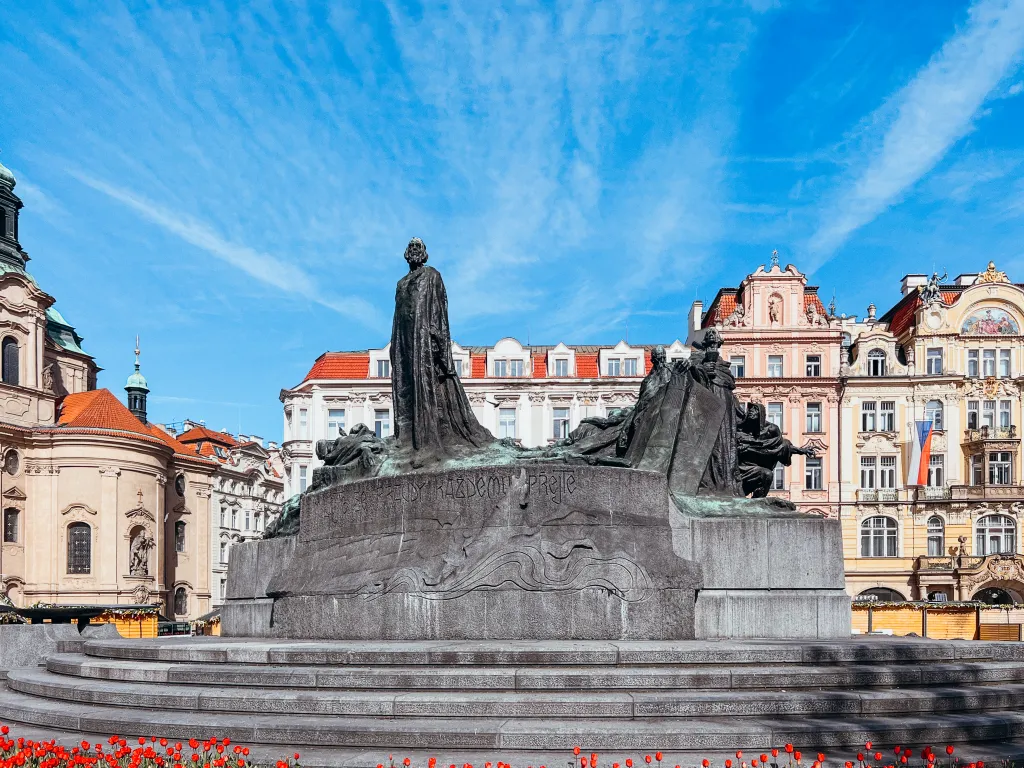
Things to do in Prague
Karlov Most: One of the most famous pedestrian bridges in the world, connecting Old Town to Lesser Town. Thirty statues, including many famous saints, line the bridge.
Staromestsky orloj: The Astronomical Clock in the Old Town Square is one of Prague’s most famous historical landmarks and one of the oldest astronomical clocks still in operation in the world. Built in the early 15th century, the clock not only tells the time but also tracks the position of the sun and moon in the sky. Every hour on the hour, the figures of the 12 apostles appear through two windows and a skeleton figure rings the bell.
Staromestske namesti: Prague’s oldest and most spectacular square, where markets have been held regularly since the 11th century. In December it hosts the best Christmas market in Prague. Old Town Square is a square surrounded by other famous buildings such as the Old Town Hall, the Tyn Church, the second St. Nicholas Church in Prague and many Baroque and Rococo houses.
Vltava Boat Tour: This is a bit of a touristy activity, but the view of Prague from the river is really beautiful. There are many boat tour options, with or without food, day, night, according to your taste and budget. The cheapest one I have seen starts from 300 CZK.
Josefov: Located in the historic center of Prague and known as the Jewish Quarter. It has been the center of Prague’s Jewish community since the Middle Ages. Old New Synagogue, Jewish Museum, Old Jewish Cemetery, Pinkas Synagogue, Spanish Synagogue are located here. There is a statue of Franz Kafka in front of the Spanish Synagogue.
Lennonova zed: Lennon Wall is located in the Malá Strana district of Prague. It is a wall covered with ever-changing graffiti and messages of peace since John Lennon’s murder in 1980.
Vrch Petrin: Designed to resemble the Eiffel Tower, but on a smaller scale, this tower stands at the highest point in Prague. You can see the widest view of Prague from here. There is also a mirrored labyrinth on this hill, which may be of interest to children.
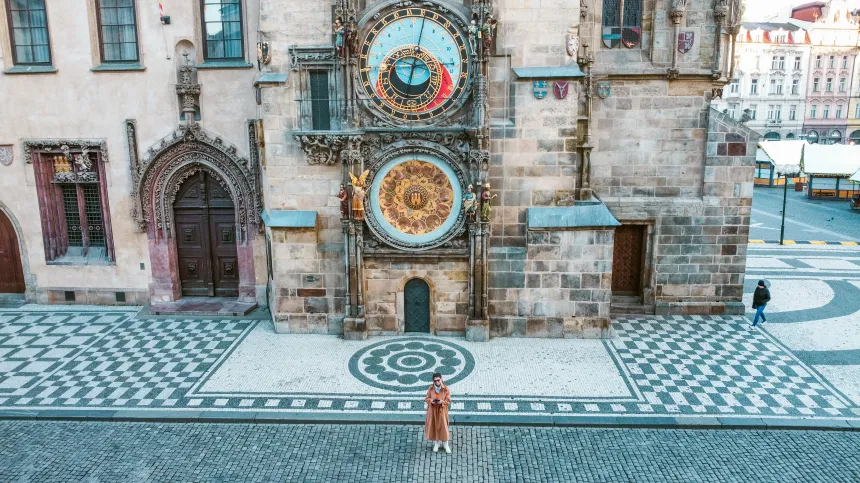
Prazsky hrad: According to the Guinness Book of Records, Prague Castle is the largest castle complex in the world and a UNESCO World Heritage Site. Within this complex you can visit the Old Royal Palace, St. Vitus Cathedral, St. George’s Basilica and walk along the Golden Road. For a bird’s eye view of Prague, climb the tower of St. Vitus Cathedral.
Zlata ulicka: Golden Street is a historic street inside Prague Castle, famous for its colorful little houses. Built in the 16th century for the guards protecting the castle, these miniature houses were later home to jewelers, artists and writers. Franz Kafka is known to have lived in house number 22 here for a while.
Valdstejnska zahrada: The Wallenstein Gardens are located in Prague’s Malá Strana district and were built together with the Wallenstein Palace at the beginning of the 17th century. It is suitable for those who want to get away from the city crowds and do a quiet activity. The garden features baroque sculptures, ornate ponds and an artificial cave covered with interesting stone formations. The albino peacocks roaming the garden are also very beautiful.
Kampa: Separated from the city by a small tributary of the Vltava River, this island is located on the Lesser Town side and the Charles Bridge crosses over the island. It is home to a large park and museum. Giant sculptures of dolls by the famous Czech artist David Cerny are located in Kampa Park. You can take great photos with swans on the river bank of the island.
Klementinum: One of the most historically and culturally important complexes in Prague. Founded in the 16th century as a Jesuit college, this large complex is open to visitors with its libraries, observatory, churches and historical halls. The Klementinum attracts attention with its Baroque architecture and is especially famous for the magnificent interior of the National Library hall. This hall is often cited as one of the most beautiful library halls in the world.
Strahovska knihovna: This is one of the most impressive and historic libraries in Prague. Part of the Strahov Monastery, this library has been in existence since the 12th century. It houses a large collection of manuscripts, books and other rare artifacts.
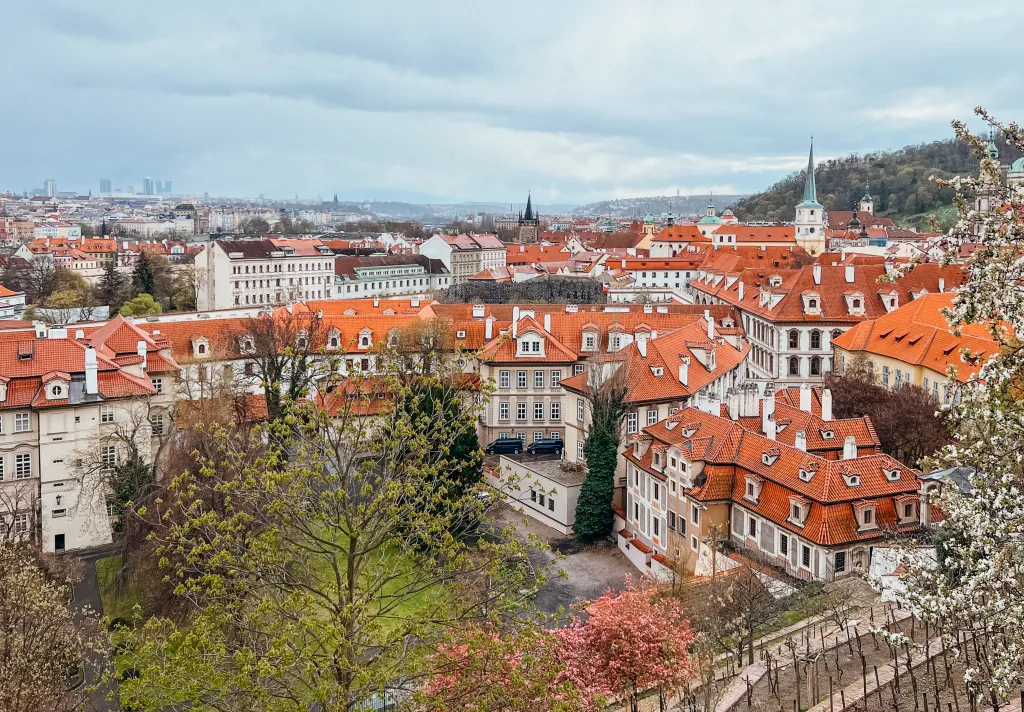
Municipal Library of Prague: When you enter the Municipal Library of Prague, you can see the cylindrical book tower from floor to ceiling. There are mirrors inside and it feels endless. There are long queues to see these books and take photos and videos, but if you go at opening time, you won’t have to wait in line.
Socha zaveseneho Sigmunda Freuda Viselec: David Cerný’s statue of Sigmund Freud hangs from a pole on Husova Street in Prague’s Old Town.
Franz Kafka Otocna Hlava: The Rotating Head of Franz Kafka, also designed by David Cerny. It is an 11-meter high head sculpture made of rotating layers, reflecting the complex and questioning spirit of Kafka’s works.
Speculum Alchemiae: This is one of Prague’s lesser-known sites. Underneath one of the oldest houses in the city is a laboratory where alchemists tried to create an elixir of youth. This underground bunker dates back to the time of King Rudolf II. The laboratory was discovered after a flood in Prague in 2002 and turned into a small museum.
Nejuzsi prazska ulicka: Prague’s narrowest street is located in the Mala Strana district. Since two people cannot cross the street, which is only 50 cm wide, they installed a traffic light. Pedestrians cross by pressing the button and turning on the light.
Narodni muzeum: The National Museum is one of Prague’s largest and oldest museums and occupies a magnificent building on the city’s Wenceslas Square. Founded in 1818, the museum is a great place to explore the Czech Republic’s rich cultural and scientific heritage in various fields such as natural sciences, history, art and music. The museum’s extensive collections include a wide range of artifacts, from fossils to historical artworks to ethnographic exhibits.
Tancici dum: Known for its form resembling a dancing couple, the building is also called “Ginger and Fred” in reference to the famous dancers Ginger Rogers and Fred Astaire. Photographing the outside of this building is a popular thing to do in Prague, but it is actually a hotel and restaurant.

Is Prague Cheap or Expensive? Prague Travel Budget
Although Prague is one of the most popular tourist cities in Central Europe, it is more affordable than many other European capitals. However, your expenses in the city will of course vary depending on the places you visit, your food and drink preferences and accommodation options. Based on my experience, I would like to share more or less travel budgets for your visit to Prague.
Accommodation options in Prague have a wide price range. A bed in a hostel costs between €15-30 per night, while a double room in a budget-friendly hotel costs between €60-100 per night. Double rooms in mid-range hotels cost between 110-160€ per night, while luxury hotels and boutique accommodation options start from 200€.
The cost of eating and drinking in Prague varies greatly depending on the places you choose. Restaurants in tourist areas are generally more expensive. An average meal in a local restaurant costs around €10-15 per person, local beer around €2-3. In more touristic or elegant places, prices start from 20€ per person.
As I mentioned above, Prague’s public transportation system is very affordable and you can visit Prague mostly on foot. I can say that the transportation item is quite affordable.
Entrance fees to museums and archaeological sites in Prague vary between 10-20€ on average. But there are many historical sites in the city that you can visit for free.
Your daily expenses in Prague, for an average budget, can be around €80-120 per person. This is just an estimate for accommodation, food and drink, transportation and a few sightseeing visits. It is possible to enjoy Prague on a lower budget, especially if you save money on accommodation, opt for free activities and eat like the locals. Luxury spending is open-ended, of course.
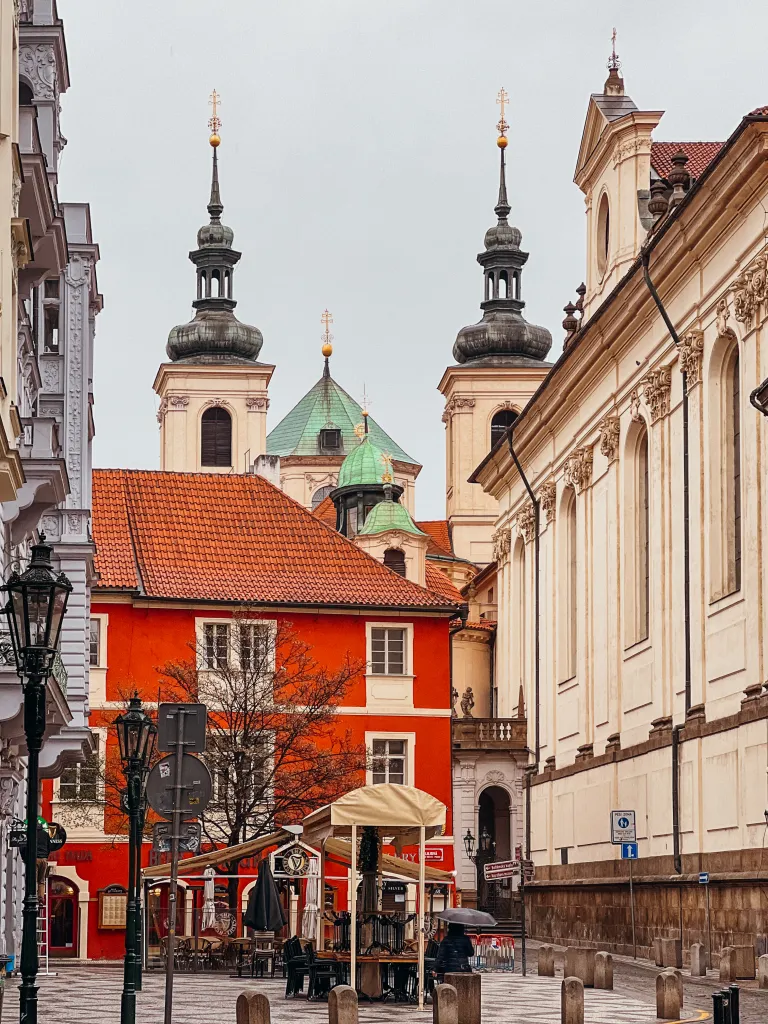
I hope my Prague Travel Guide will be useful for you and you will plan a nice trip to Prague. There may be some things I missed, if you have any other questions, please leave them in the comments. If you have any extra suggestions, I would also welcome them in the comments. Have a nice trip!
Don’t forget to follow me for more photos and to be informed about my future posts!
Instagram: lifetime.journey
Tiktok: ihdcnwbcmw.com
Facebook: ihdcnwbcmw.com
Discover more from LIFETIME JOURNEY
Subscribe to get the latest posts sent to your email.